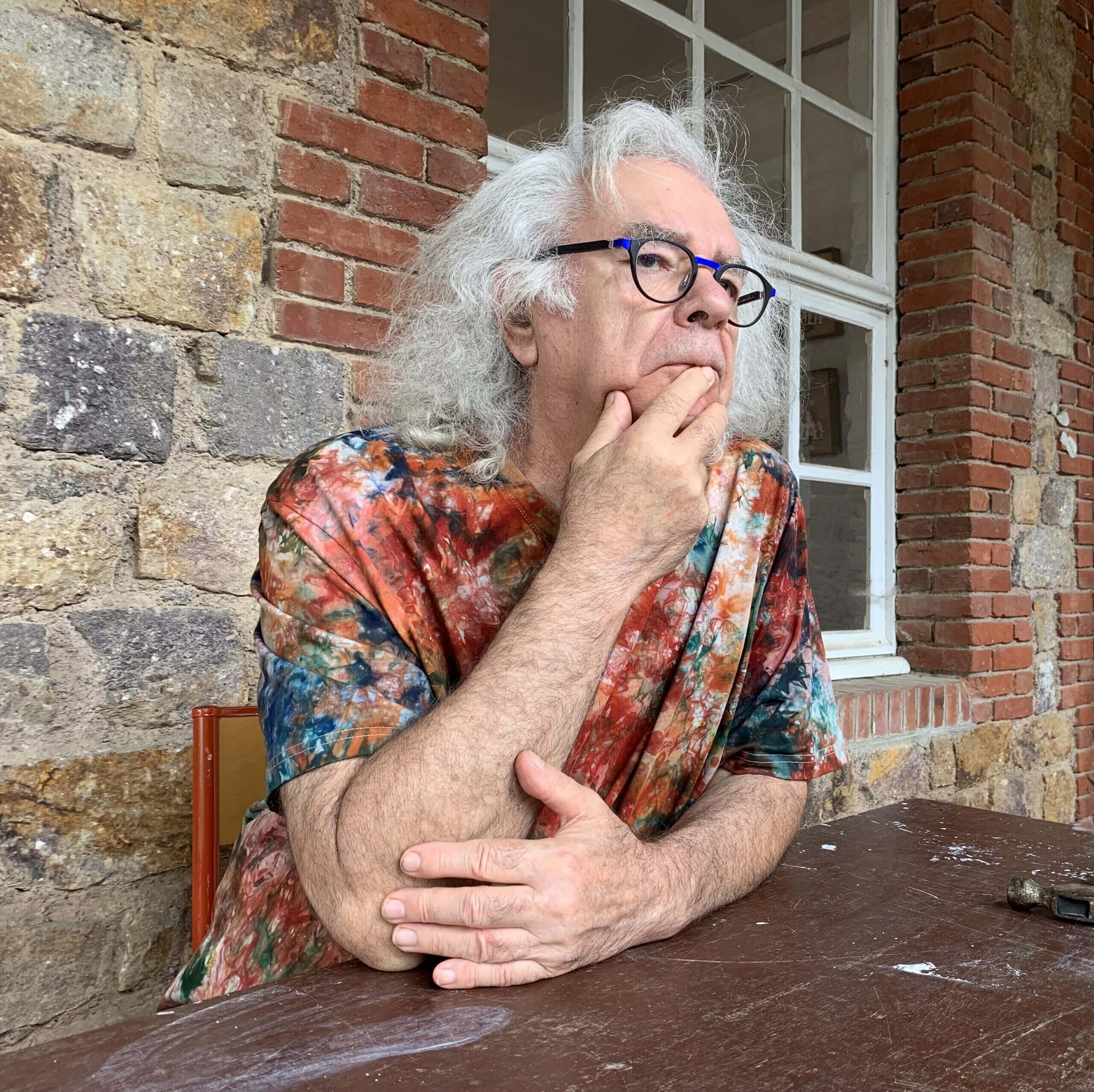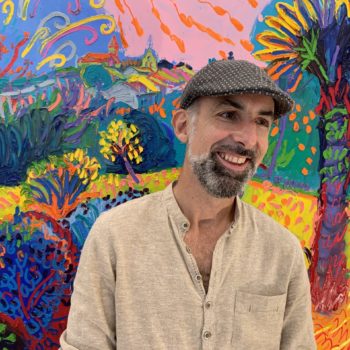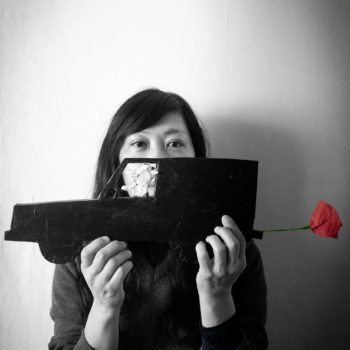
Bernard Briantais, artist drawing the forgotten
- Post published:18 September 2023
- Post category:Drawing & Collage / Meet the artists
Bernard Briantais takes a gentle look at the lonely and the forgotten. Through his charged and parodic art, he launches a veritable accusation against the consumer society’s simulacrum of happiness for all.
Meet a wise humanist with an anarchist spirit.
Portraying the forgotten : a fair testimony
Bernard Briantais’ characters are not caricatures, because he doesn’t ridiculize them. The artist’s caricature targets the ferocity of commercial society and what it imposes on many of those excluded: loneliness and poverty.
Bernard Briantais’ line is charged with the spirit of anarchy and subversion. He is tender with those left behind, harsh with the powerful and the society that looks the other way.
Bernard Briantais highlights those who remain alone, restoring their dignity with facetious, gourmet touches. In addition to the courtesy of the graphic detail, he elegantly names them all, reminding us of the humanity of those confronted with social harshness.
Where does Bernard Briantais' facetious line drawings come from?
Bernard’s artistic background is inspired by humanism, and his silhouettes come from far and wide… A city man, the artist first drew his inspiration from the urban theater of Nantes. He remains faithful to Nantes, where he was born, lives and works today. Drawing was his means of expression from an early age.
As a child, he was enchanted by the panache of the colorful images in history books.
During his long school vacations, he drew comics and invented stories to occupy his boredom. From the age of 12-13, at the Jardin des plantes in Nantes, he sketched the typical little grandmothers of the 60s, with their little hats, fox collars, walking sticks and umbrellas.
The urban space of his youth also offered him the show of church exits: Bernard liked to follow funeral exits with their theatrical hangings. He invented stories of widows in black suits living in slow solitude alongside a cat. In this way, he learned to draw quickly. His early drawings were rough, but as the years went by, he improved his strokes, sketching his characters in a single line.
In high school, he was a very good student, destined for the Khâgne Hypokhâgne and then Normale Sup classes. But the intense climate of family misunderstanding soon made him leave home. He then led an independent life, stopping his studies and turning to a manual job: house painter. The tools were rougher than those of the “Beaux-Arts”, but he remained in the world of color and precision. The seasonal activity of a craftsman enables him to devote himself to his art from time to time, while preserving his independence.
Drawing people either laughing or angry, laughing at the eternal human comedy
There’s nothing sad about Bernard Briantais’ work: in the metro, on the pavements, in the cafés, people are laughing or angry, with their solitary or precarious personalities.
His sensibility is shaken by lonely, poor and migrant people.
Times change, but loneliness and distress remain. Aware that he himself could have been tipped over the edge when he was selling little drawings to survive, he fervently wants to talk about ignored souls. In his works, he gives them honor and consideration: each character has an identity thanks to the first name written on its back.
A lover of Charles Baudelaire’s words, Bernard Briantais depicts “the famous inn inscribed upon the book, where one can eat, and sleep, and take his rest;“, he “makes the beds for the poor, naked people” that the poet depicts:
[…]
Through the storm and the snow and the hoar-frost
It is the vibrant light on our black horizon;
It is the famous inn inscribed upon the book,
Where one can eat, and sleep, and take his rest;
It’s an Angel who holds in his magnetic hands
Sleep and the gift of ecstatic dreams
And who makes the beds for the poor, naked people;
[…]
extracts from «The Death of the Poor», Charles Baudelaire
translated by William Aggeler, The Flowers of Evil (Fresno, CA: Academy Library Guild, 1954)





